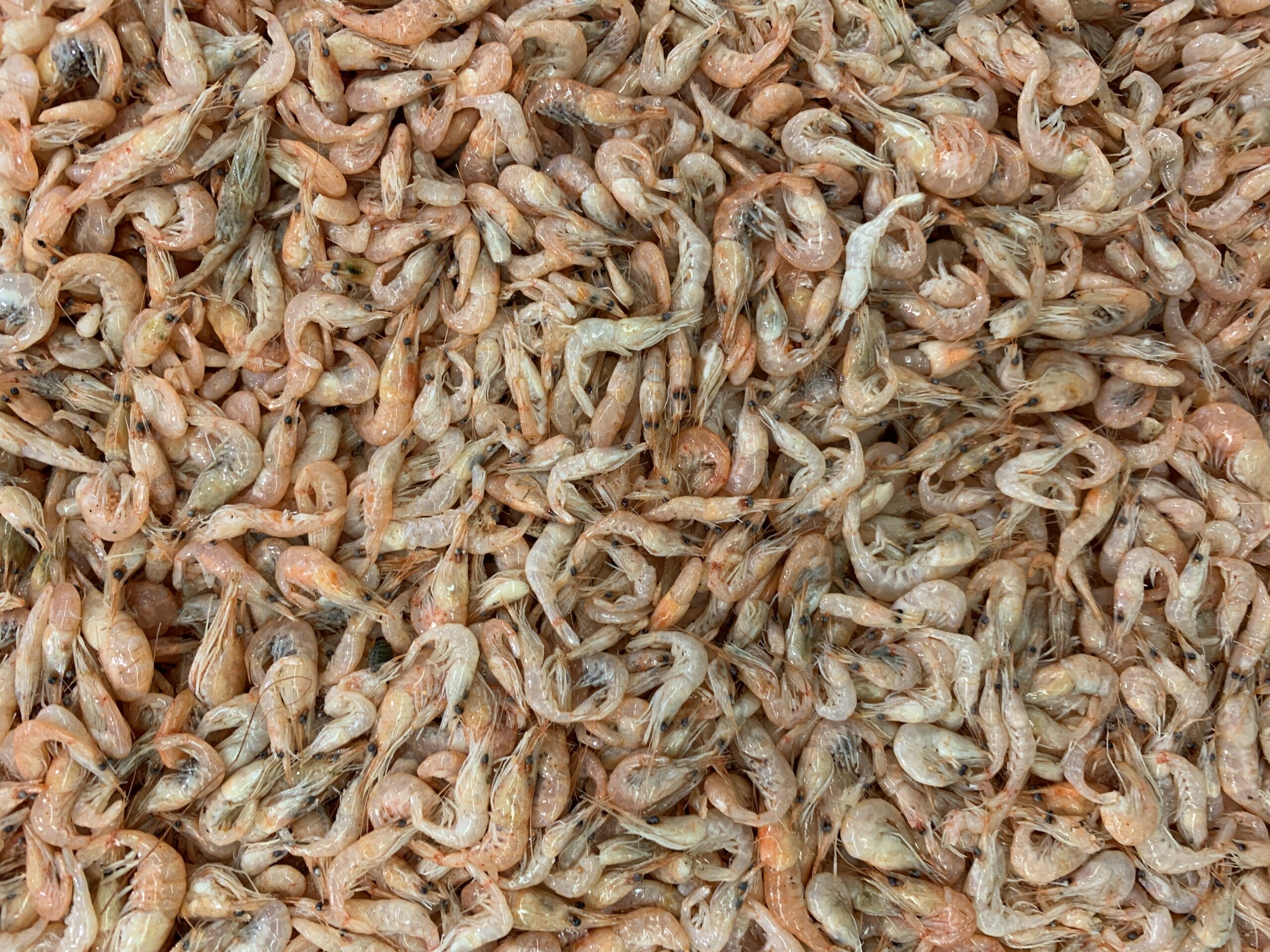In this article, we will explore the topic of addressing safety concerns when it comes to odors and discoloration in well water. We understand that maintaining a safe and clean water supply is crucial for the well-being of you and your family. With that in mind, we will provide you with actionable tips and guidelines on how to effectively tackle these issues, ensuring that your well water remains safe and odor-free. So, let’s delve into the world of well water maintenance and discover how to take care of any unpleasant odors or discoloration that may arise.
Understanding Well Water Odors
Common causes of well water odors
When it comes to well water odors, there are several common causes that can be identified. One of the most prevalent causes is the presence of sulfur bacteria in the water. These bacteria thrive in anaerobic conditions and produce hydrogen sulfide gas, which is responsible for the characteristic rotten egg smell often associated with well water. Another common cause is the presence of organic matter in the water, which can lead to musty or earthy odors. Additionally, certain minerals such as iron and manganese can contribute to metallic or metallic tasting odors in well water.
Types of odors and their potential sources
Well water odors can vary in their scent, and understanding the type of odor can help in identifying its potential source. Sulfur or rotten egg smells are typically caused by the presence of sulfur bacteria or hydrogen sulfide gas. Musty or earthy odors are commonly associated with organic matter in the water, such as decaying leaves or vegetation. Chlorine-like or chemical smells can be indicative of the presence of disinfectants or other chemicals used in water treatment. Metallic or metallic tasting odors are often caused by the presence of minerals like iron or manganese in the water.
Health risks associated with odorous well water
While odorous well water can be unpleasant to smell and taste, it is important to consider the potential health risks associated with consuming or using water that has an odor. In some cases, the presence of certain bacteria or contaminants that cause the odor may also pose health risks. For example, sulfur bacteria themselves are not harmful, but they indicate the presence of conditions that may support the growth of other pathogens. Additionally, certain chemicals or minerals in odorous well water, if present in high concentrations, can have adverse health effects. Therefore, it is crucial to address and treat well water odors to ensure the safety of your water supply.
Determining the Source of Odors and Discoloration
Testing well water for odors and discoloration
To determine the source of odors and discoloration in your well water, it is important to conduct proper testing. This can be done through various methods, including on-site testing kits or by sending water samples to certified laboratories for analysis. These tests can detect the presence of specific contaminants, bacteria, and minerals that may be causing the odors or discoloration. It is recommended to regularly test your well water, especially if you notice any changes in odor or color.
Identifying the specific odors and their causes
Once you have conducted the necessary tests, it is crucial to identify the specific odors and their causes. This can be done by analyzing the test results and consulting with professionals in the field. Identifying the specific odors and their underlying causes will help in determining the most effective treatment methods for addressing the issue.
Investigating possible contamination sources
In addition to testing the well water itself, it is important to investigate possible contamination sources that may be contributing to the odors and discoloration. Some common sources of contamination include nearby septic systems, agricultural runoff, industrial activities, or chemical spills. By identifying and addressing these contamination sources, you can prevent further deterioration of your well water quality.

Addressing Odors and Discoloration through Maintenance
Regular well system maintenance
One of the most effective ways to address and prevent odors and discoloration in well water is through regular well system maintenance. This includes routine inspections, cleaning of the well components, and ensuring proper functioning of the well pump and other equipment. Regular maintenance helps to prevent the accumulation of debris, bacteria, and minerals that can contribute to odors and discoloration.
Chlorination as a treatment method
Chlorination is a commonly used treatment method for addressing odors and disinfecting well water. Chlorine acts as a disinfectant, eliminating bacteria and controlling the growth of sulfur bacteria that cause odors. It is important to use the correct dosage and follow proper chlorination procedures when treating well water to ensure the best results.
Shock chlorination process
Shock chlorination is a more intensive form of chlorination that involves a higher concentration of chlorine for a short period of time. This process helps to thoroughly disinfect the well system and eliminate persistent odors and bacteria. It is recommended to consult with professionals or certified well water testing companies to properly conduct shock chlorination.
Flushing and cleaning the well system
Regularly flushing and cleaning the well system is another important maintenance step to address odors and discoloration. Flushing the well involves pumping out a significant amount of water to remove built-up sediments, minerals, and bacteria. Cleaning the well components, such as the casing and screens, helps to remove any accumulated debris that may be contributing to the odors and discoloration.
Removing and replacing old or corroded pipes
In some cases, old or corroded pipes within the well system may be the source of odors and discoloration. It is important to inspect the condition of the pipes and, if necessary, remove and replace them. This can help to improve the overall water quality and eliminate any potential sources of contamination.
Treating Specific Types of Odors
Sulfur or rotten egg smell
To treat sulfur or rotten egg smells in well water, one effective method is shock chlorination. This process involves introducing a high concentration of chlorine into the well system to eliminate sulfur bacteria and disinfect the water. Additionally, installing activated carbon filters or oxidizing filters can help to remove the sulfur compounds and reduce the odors.
Musty or earthy odor
Musty or earthy odors in well water are often caused by the presence of organic matter. To address this issue, it is important to identify and eliminate the source of organic matter. Regular well system maintenance, including cleaning and flushing, can help to remove accumulated debris and prevent the growth of bacteria that produce these odors.
Chlorine-like or chemical smell
If your well water has a chlorine-like or chemical smell, it may be an indication of the presence of disinfectants or other chemicals used in water treatment. To address this issue, it is recommended to contact your local water utility or a certified well water testing company to determine the source of the chemicals. Depending on the specific contaminant, treatment methods such as activated carbon filters or chemical neutralization may be recommended.
Metallic or metallic tasting odor
Metallic or metallic tasting odors in well water are often caused by the presence of minerals such as iron or manganese. To treat these odors, a water treatment method known as oxidation and filtration can be used. This process involves oxidizing the minerals with the use of chemicals or aeration, and then filtering them out. This helps to remove the metallic compounds and improve the taste and odor of the water.

Preventing Odors and Discoloration
Well construction best practices
One of the key steps in preventing odors and discoloration in well water is to follow well construction best practices. This includes proper sealing and construction of the well casing, ensuring that it is watertight and properly protected from potential sources of contamination. Well construction should also take into consideration the geological conditions of the area to prevent the intrusion of surface water or pollutants.
Maintaining proper well depth
Maintaining the proper well depth is crucial in preventing odors and discoloration in well water. Shallow wells are more prone to contamination from surface water sources, which can introduce bacteria, sediments, and pollutants. It is recommended to consult with professionals to ensure that your well is properly constructed and maintains the appropriate depth.
Avoiding contamination from nearby sources
To prevent odors and contamination in well water, it is important to identify and avoid potential sources of contamination in the vicinity of your well. These may include septic systems, livestock areas, agricultural fields, or chemical storage facilities. Implementing proper setbacks and protective measures can help to minimize the risk of contamination and maintain the quality of your well water.
Ensuring proper septic system functioning
Proper septic system functioning is essential in preventing groundwater contamination, which can lead to odors and discoloration in well water. Regular septic system maintenance, including inspections and pump-outs, is necessary to ensure that the system is working effectively and does not pose any risks to your well water quality.
Implementing water treatment systems
Installing water treatment systems, such as activated carbon filters, reverse osmosis systems, or ultraviolet disinfection, can provide an additional layer of protection against potential contaminants and odors. These systems are designed to remove specific contaminants or improve the overall quality of well water. It is important to choose a suitable treatment system based on your specific needs and the results of water testing.
Potential Health Risks and Treatment Options
Health effects of consuming odorous or discolored well water
While the presence of odors and discoloration in well water may not always indicate immediate health risks, it is important to consider the potential long-term health effects. Consuming well water that contains certain bacteria or contaminants can lead to waterborne illnesses or infections. Additionally, high concentrations of certain minerals or chemicals may have adverse health effects. Concerns such as gastrointestinal issues, skin irritations, and respiratory problems may arise from prolonged exposure to contaminated or odorous well water.
Testing well water for contaminants and bacteria
To determine the potential health risks associated with odorous or discolored well water, it is crucial to conduct testing for contaminants and bacteria. Water testing should be conducted by certified laboratories, and the specific tests should be based on the identified odors or discoloration. These tests can detect the presence of harmful bacteria, heavy metals, pesticides, or other contaminants that may pose health risks.
Treating waterborne illnesses and infections
If you suspect that you or your family members have developed waterborne illnesses or infections from consuming odorous or discolored well water, it is important to seek medical advice and treatment. Depending on the specific illness or infection, treatment options may include antibiotics, antiparasitic medications, or supportive care to address the symptoms. Prompt medical attention can help in preventing complications and restoring health.
Seeking medical advice and diagnosis
If you are experiencing health issues or have concerns about the safety of your well water, it is recommended to seek medical advice from healthcare professionals. They can evaluate your symptoms, conduct necessary tests, and provide appropriate guidance and treatment options. It is essential to communicate any well water odors or discoloration issues to your healthcare provider to assist in diagnosing potential water-related health concerns.

Professional Expertise and Well Water Testing
Importance of consulting professionals
When it comes to addressing well water odors and discoloration, it is crucial to consult professionals with expertise in water quality and treatment. Certified well water testing companies, environmental consultants, or water treatment specialists can provide valuable guidance and assistance in identifying the causes of odors and discoloration, conducting water testing, and recommending appropriate treatment methods. Their expertise can help in ensuring the safety and quality of your well water.
Certified well water testing companies
To obtain accurate and reliable testing results for your well water, it is recommended to work with certified well water testing companies. These companies have the necessary expertise and equipment to conduct comprehensive water testing and provide detailed analysis of the results. They can assist in identifying the specific contaminants or bacteria causing the odors and discoloration, and provide guidance on treatment options.
State and local agencies for assistance
State and local agencies can be valuable resources for assistance and guidance in addressing well water odors and discoloration. They often have programs in place to help homeowners with private wells, including providing information on water testing, treatment options, and regulations. These agencies may also have access to grants or financial assistance programs to support well owners in improving their well water quality.
Analyzing test results and understanding regulations
Once you receive the test results for your well water, it is important to analyze them and understand the regulations governing water quality in your area. The test results will indicate the presence of specific contaminants or bacteria and their concentrations. By understanding the regulations and recommended limits, you can assess the severity of the issue and determine the necessary actions to address the odors and discoloration.
Addressing Common Questions and Concerns
Is well water with odor and discoloration safe to use?
The safety of well water with odor and discoloration depends on the specific cause of the odor and discoloration. While some odors and discoloration may not pose immediate health risks, they can indicate the presence of contaminants or bacteria that could have long-term health effects. It is important to conduct proper testing and analysis to determine the cause and potential risks. If you are unsure about the safety of your well water, it is best to err on the side of caution and seek professional advice.
Can well water contaminants be removed completely?
The complete removal of well water contaminants depends on the specific contaminants and the treatment methods used. With proper treatment, many common contaminants can be effectively removed or significantly reduced. Treatment methods such as activated carbon filtration, reverse osmosis, and oxidation can help in removing a wide range of contaminants. However, it is important to regularly monitor the water quality and conduct periodic testing to ensure the ongoing effectiveness of the treatment and to address any new sources of contamination.
How does well water compare to municipal water supplies?
Well water and municipal water supplies have different characteristics and potential sources of contamination. Municipal water supplies are typically treated and regulated by water utilities, which ensures consistent water quality. Well water, on the other hand, is sourced from private wells and can be more susceptible to contamination from nearby sources. However, with proper well construction, regular testing, and appropriate treatment methods, well water can be safe and of high quality. It is important for well owners to take responsibility for their water quality and implement necessary measures to ensure the safety of their well water.
Are there any temporary solutions to address odors or discoloration?
While proper testing and treatment are necessary to address odors and discoloration in well water effectively, there are some temporary solutions that can provide short-term relief. Installing activated carbon filters or using point-of-use treatment systems can help reduce odors or improve the taste of well water. Additionally, regular flushing or aerating the water can provide temporary relief from odors and discoloration. However, it is important to note that these temporary solutions do not address the underlying causes and should not replace proper testing and treatment.
What to do when well water problems persist?
If well water problems, including odors and discoloration, persist despite maintenance efforts and treatment methods, it is important to seek professional advice. Consulting with certified well water testing companies or water treatment specialists can help in identifying any underlying issues and recommending appropriate solutions. They can perform a thorough assessment of your well system, conduct comprehensive water testing, and provide expert guidance to address the persistent problems.
Educating and Raising Awareness
Informing yourself and others about well water quality
One of the key steps in ensuring well water safety is to educate yourself and others about well water quality. Stay informed about the potential risks, best practices for well construction and maintenance, and treatment methods for addressing odors and discoloration. By educating yourself, you can make informed decisions to protect the quality of your well water.
Sharing resources and information with the community
Sharing resources and information about well water quality with your community can help raise awareness and promote safe practices. Organize community events or workshops to discuss well water safety, invite experts to speak on the topic, and provide educational materials to community members. By sharing valuable resources, you can empower others to take proactive steps in maintaining the safety of their well water.
Promoting well water safety measures
Promoting well water safety measures in your community is essential in ensuring the health and well-being of residents. Encourage proper well construction, regular testing and maintenance, and implementation of appropriate treatment methods. Work with local organizations, schools, and government agencies to develop educational campaigns and initiatives that emphasize the importance of well water safety.
Participating in local water quality initiatives
Getting involved in local water quality initiatives can make a significant impact in addressing well water odors and discoloration. Join community organizations or volunteer for programs that focus on water quality monitoring, well water testing, or watershed protection. By actively participating, you can contribute to the overall improvement of water quality in your area and create a stronger sense of community around well water safety.
Conclusion
Taking prompt action to address odors and discoloration in well water is crucial to ensuring the safety and quality of your water supply. By understanding the common causes of odors, identifying the specific odors and their sources, and investigating possible contamination sources, you can effectively determine the appropriate treatment methods. Regular well system maintenance, chlorination, flushing, and removing old or corroded pipes are important maintenance practices for addressing odors and discoloration. Treating specific types of odors requires targeted approaches, such as shock chlorination for sulfur smells or oxidation and filtration for metallic odors. Preventive measures, including well construction best practices, maintaining proper well depth, avoiding contamination sources, ensuring septic system functioning, and implementing water treatment systems, can help prevent odors and discoloration. It is important to be aware of the potential health risks associated with odorous or discolored well water and seek medical advice when needed. Consulting professionals and certified well water testing companies can provide valuable expertise and assistance in testing, analyzing results, and understanding regulations. Addressing common questions and concerns about well water safety helps in informing and empowering well owners. Educating and raising awareness in the community, sharing resources and information, promoting well water safety measures, and participating in local water quality initiatives contribute to a safer and healthier well water environment. By prioritizing regular maintenance, testing, and seeking professional advice when needed, you can ensure the safety and quality of your well water for you and your family.

